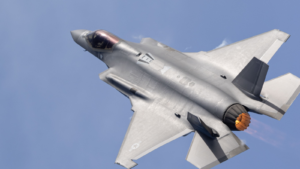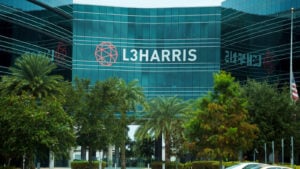And that’s why some investors are becoming interested in the sector. The good news (that comes with a word of caution) is that as the private sector becomes more involved in the business of space, there are no shortage of choices for investors to consider.
For example, there are many small-cap stocks in this sector, such as Rocket Lab USA (NASDAQ:RKLB), that are showing great promise. However, many of these companies, Rocket Lab included, are not turning a profit yet. That doesn’t mean you shouldn’t invest in these stocks. They may be perfectly fine if you set aside a portion of your portfolio for speculating.
Another way to invest in space stocks may be through exchange-traded funds (ETFs). One of the more popular choices in this sector is the SPDR S&P Aerospace & Defense ETF (NYSE:XAR). Funds like these help smooth out some volatility. However, you may still be exposed to stocks you’d rather not be speculating on.
A third way is to look for companies that are already getting a piece of what looks to be a trillion-dollar sector. These proven blue-chip companies are likely to continue growing with the sector and are ones you can sleep well owning now. Here are three space stocks that fit that criterion.
Northrop Grumman (NOC)

It’s been nearly 55 years since the first moon landing, and eyes once again are focusing on a series of combined robotic and manned space missions to the lunar surface known as the Artemis program. If this does become a reality, Northrop Grumman (NYSE:NOC) will be a key player just as they were for the first moon landing.
The company is developing the Transfer Element for the program. This will allow the spacecraft to dock once it reaches the moon. The company is also developing its HALO module for NASA, which will orbit the moon and give astronauts a stopping point before a moon landing.
And that’s just scratching the surface of the company’s space portfolio. For all that, Northrop Grumman is still only a $74 billion company trading at just 21x forward earnings. Analysts forecast 9.5% earnings growth. That growth may not be completely priced into the NOC stock price.
Northrop also pays a secure dividend with a 24% payout ratio. The dividend yield isn’t particularly exciting at just 1.52%. However, it pays out $7.48 per share annually. And the dividend has increased in each of the last 20 years.
Lockheed Martin (LMT)

Lockheed Martin (NYSE:LMT) is best known for being one of the best defense stocks to own. And with geopolitical tensions rising around the world, that alone is a good reason to own some LMT stock.
That being said, the company has a small, but growing, space portfolio. One example of this comes from NASA’s Artemis program. Aside from returning to the moon, a goal of the program is to send a manned ship to Mars and then into deep space.
Lockheed has the lead in this project as the lead designer for NASA’s Orion ships that will be required for the project. Lockheed Martin already has a contract for six Orion missions and can order up to 12 in total.
Similar to Northrop Grumman, Lockheed Martin trades at an attractive valuation of about 16x forward earnings. Analysts give the stock about a 10% upside. Plus, you get a company that has increased its dividend for 21 consecutive years. And that dividend pays out $12 per share annually.
L3Harris Technologies (LHX)

Like the other two companies on this list of space stocks, L3Harris Technologies (NYSE:LHX) is a big player in the defense sector. Its corporate portfolio also includes 140 space products and programs including missile warnings and defense.
In July 2023, L3Harris completed its acquisition of Aerojet Rocketdyne. This is expected to move the company into the missiles and munitions market from which they had previously been absent.
Another way LHX stock is like the other companies in this article is that it’s currently undervalued. The stock trades near the bottom of its 52-week range and at just 14x forward earnings. The annual dividend payout, while the smallest of the three space stocks, is a respectable $4.56. And the company has increased that dividend in each of the last 22 years.
On the date of publication, Chris Markoch did not have (either directly or indirectly) any positions in the securities mentioned in this article. The opinions expressed in this article are those of the writer, subject to the InvestorPlace.com Publishing Guidelines.
Chris Markoch is a freelance financial copywriter who has been covering the market for over five years. He has been writing for InvestorPlace since 2019.
